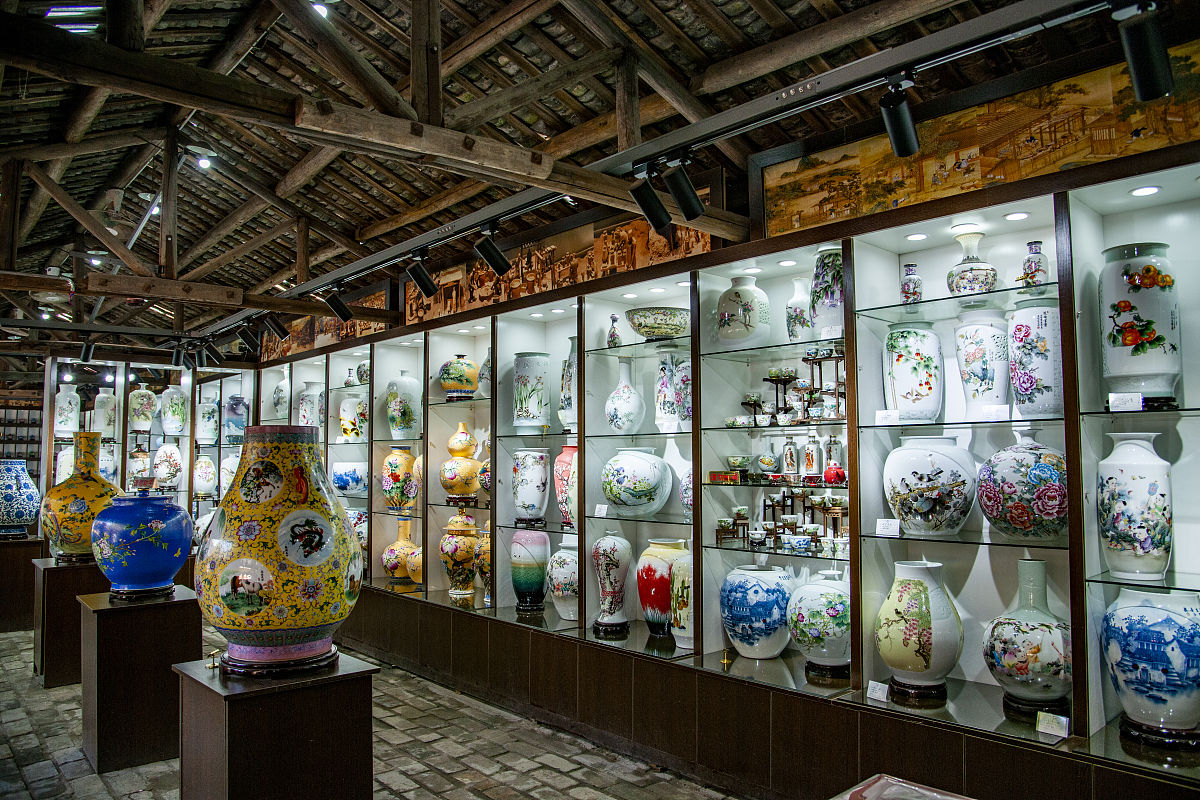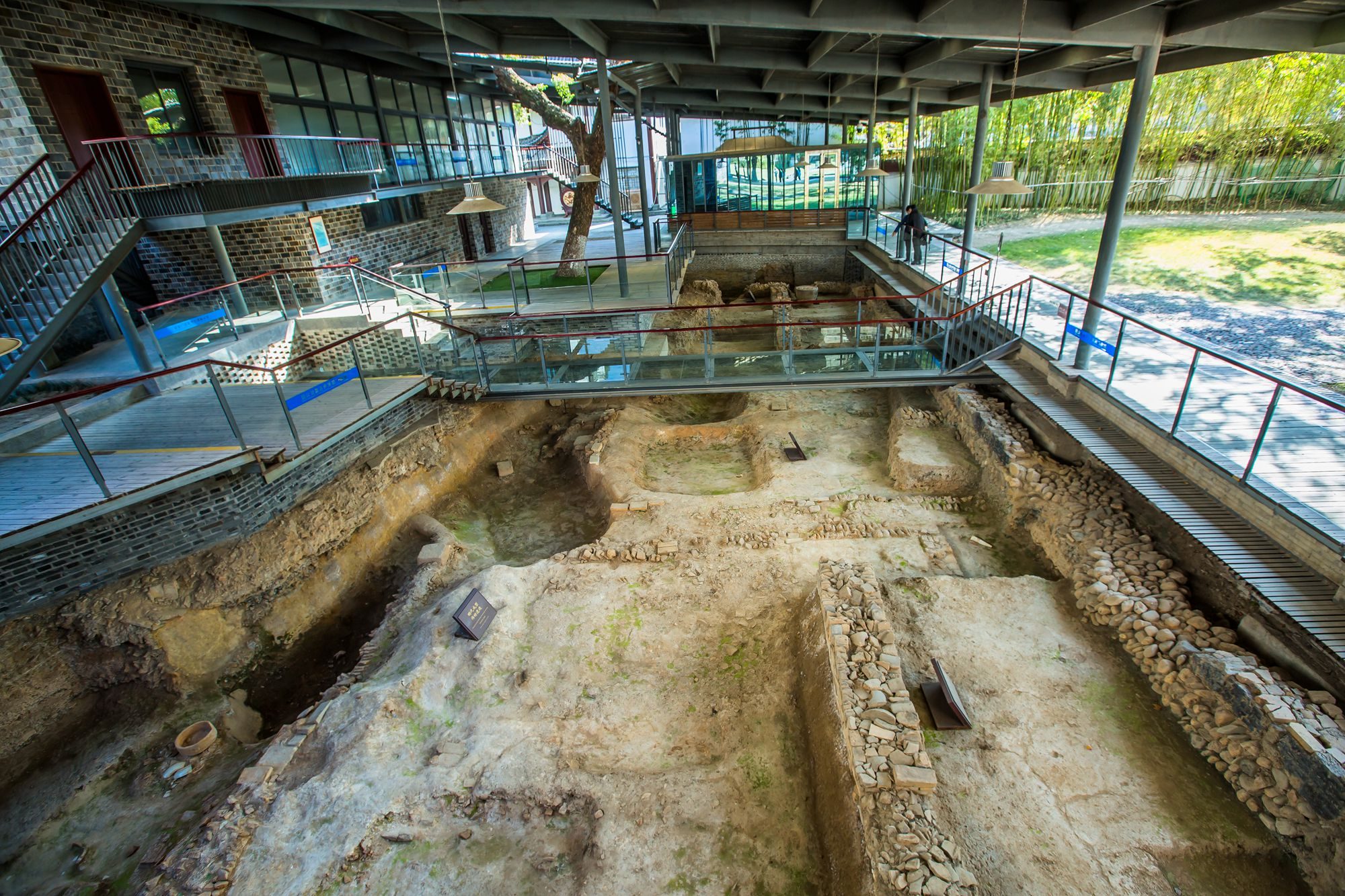Jingdezhen - Journey Through China's Millennium Porcelain Capital

Jingdezhen ancient kiln ruins and exquisite porcelain exhibition, showcasing millennium-old porcelain craftsmanship

Jingdezhen ancient kiln ruins and exquisite porcelain exhibition, showcasing millennium-old porcelain craftsmanship
Jingdezhen City is located in the northeastern part of Jiangxi Province, at the transition zone between the Huangshan and Huaiyu Mountain ranges and the Poyang Lake Plain. Historically, it was known as one of China's four famous towns, alongside Foshan in Guangdong, Hankou in Hubei, and Zhuxianzhen in Henan.
Jingdezhen has a long history of porcelain production, dating back to the Han Dynasty, flourishing during the Tang and Song Dynasties, and reaching its peak during the Ming and Qing Dynasties. During the Tang Dynasty, the white porcelain from Changnan Town (predecessor of Jingdezhen) was already renowned as "false jade." In the first year of the Jingde reign of Emperor Zhenzong of Song (1004 AD), due to the excellent quality of the blue and white porcelain produced in Changnan Town, the imperial court renamed it Jingdezhen and established kilns there to produce porcelain exclusively for the imperial family.
During the Ming and Qing Dynasties, Jingdezhen became the national center for porcelain production, with the establishment of the "Imperial Kiln Factory" dedicated to producing porcelain for the royal family. It attracted skilled artisans from across China, and porcelain-making techniques reached unprecedented heights. Jingdezhen porcelain not only gained great fame domestically but was also exported overseas via the Maritime Silk Road, exerting a profound influence on world ceramic culture.
The Jingdezhen Ancient Kiln Folk Customs Area is a national AAAAA-level tourist attraction and a concentrated exhibition of Jingdezhen's ceramic culture. It is the best place to learn about Jingdezhen's porcelain-making history and techniques.
The area preserves many ancient kilns, such as the Qing Dynasty Town Kiln, Ming Dynasty Gourd Kiln, and Yuan Dynasty Steamed Bun Kiln, which are living fossils of Jingdezhen's ceramic history. Additionally, the scenic area features ceramic folk customs exhibitions and handcraft porcelain demonstrations, allowing visitors to watch up close the exquisite skills of porcelain masters and learn about the entire process from raw materials to finished products.

Located in the center of Jingdezhen, the Imperial Kiln Factory Site was the kiln for producing porcelain exclusively for the royal family during the Ming and Qing Dynasties. It is one of the most important sites in Chinese ceramic history.
The Imperial Kiln Factory was founded in the second year of Hongwu reign of Ming Dynasty (1369 AD) and operated for 542 years through 27 emperors of the Ming and Qing Dynasties. It produced many world-renowned exquisite porcelains, such as blue and white porcelain and polychrome porcelain of the Ming Dynasty, and famille rose and enamel porcelain of the Qing Dynasty.
The Taoxichuan Cultural and Creative District is a new cultural landmark in Jingdezhen, located in the Zhushan District. It is a cultural and creative park transformed from the former state-owned Yuzhou Porcelain Factory.
The Taoxichuan Cultural and Creative District retains the industrial style of the original factory buildings while incorporating modern design elements, becoming a cultural and creative industrial park integrating ceramic culture exhibition, creative design, artistic creation, and leisure entertainment. There are many ceramic studios, art galleries, specialty shops, and cafes here, making it an artistic gathering place in Jingdezhen.
The China Ceramic Museum is China's first ceramic-themed museum, located in the Changjiang District of Jingdezhen. It houses a large collection of ceramic artifacts, from Neolithic pottery to Ming and Qing porcelain, and modern ceramic artworks, showcasing the development history of Chinese ceramics.
The museum's collection is rich and diverse, including rare treasures such as shadow celadon from the Song Dynasty, blue and white porcelain from the Yuan Dynasty, polychrome porcelain from the Ming Dynasty, and famille rose porcelain from the Qing Dynasty. These porcelains not only demonstrate the exquisite craftsmanship of Chinese ceramics but also reflect the social culture and aesthetic trends of different periods.
Jingdezhen ceramic culture is an important part of traditional Chinese culture, with a long history and rich connotations. Jingdezhen porcelain is famous worldwide for its exquisite craftsmanship, unique style, and rich cultural connotations.
Jingdezhen porcelain is famous for its characteristics of "white as jade, bright as mirror, thin as paper, and resonant as bell". "White as jade" refers to the white and delicate body of Jingdezhen porcelain, like suet jade; "bright as mirror" refers to the smooth glaze surface of the porcelain, which can clearly reflect objects; "thin as paper" refers to the thin body of the porcelain, some of which are even translucent; "resonant as bell" refers to the clear and melodious sound produced when the porcelain is struck, like a stone chime.
The porcelain-making process in Jingdezhen is very complex, requiring multiple procedures to complete. Traditional porcelain-making processes include material preparation, body making, body trimming, glazing, decoration, firing, etc., each requiring exquisite skills and rich experience.
In Jingdezhen, many porcelain-making techniques are passed down through families or apprenticeships. These traditional techniques are not only an important part of Jingdezhen's ceramic culture but also an important content of China's intangible cultural heritage.
Jingdezhen ceramic tableware is one of the most famous specialties of Jingdezhen, loved for its exquisite craftsmanship, beautiful patterns, and practical functions. Jingdezhen's ceramic tableware includes bowls, plates, dishes, cups, etc., with materials such as bone china, strengthened porcelain, and celadon.
Jingdezhen ceramic tableware is not only practical but also exquisite works of art, which can be collected or given as gifts. Various exquisite ceramic tableware can be purchased in Jingdezhen's ceramic markets and major shopping malls.
Jingdezhen has many special snacks, such as cold noodles, dumpling cakes, alkaline cakes, and fried cakes. Among them, cold noodles are one of the most representative snacks in Jingdezhen, made of sweet potato starch, with a chewy texture, and served with special seasonings, with a very unique taste.
Dumpling cakes are another popular snack, with skins made of glutinous rice flour and fillings with various choices, such as pork, vegetables, tofu, etc., steamed, with a delicious taste. Shops selling these special snacks can be found in the streets and alleys of Jingdezhen.
In addition to practical ceramic tableware, Jingdezhen also has many exquisite ceramic jewelry, such as necklaces, bracelets, earrings, brooches, etc. These jewelry pieces are small and exquisite, with beautiful patterns, making them good souvenirs and gifts.
In the Taoxichuan Cultural and Creative District and ceramic markets of Jingdezhen, there are many shops specializing in ceramic jewelry, with affordable prices and diverse styles, loved by tourists.
Jingdezhen not only produces porcelain but also good tea. Located in mountainous areas with humid climate and fertile soil, it is suitable for tea tree growth. The most famous tea in Jingdezhen is Fuliang tea, with a long history, already famous throughout the country during the Tang Dynasty, as mentioned in Bai Juyi's poem "Pipa Song": "Merchants value profit over separation, last month went to Fuliang to buy tea."
Fuliang tea is famous for its high aroma, mellow taste, and resistance to brewing, and is one of China's high-quality teas. Authentic Fuliang tea can be purchased in major shopping malls and tea specialty stores in Jingdezhen.
In Jingdezhen, tourists can not only appreciate exquisite porcelain but also experience the fun of making porcelain themselves. There are many ceramic experience studios in Jingdezhen, offering experience programs such as throwing, painting, and carving, allowing tourists to make their own ceramic works under the guidance of professional teachers.
The price of ceramic experience varies depending on the program, time, and location, generally ranging from 100 to 300 yuan. After the experience, tourists can choose to take their works away, or have the studio fire and mail them home.